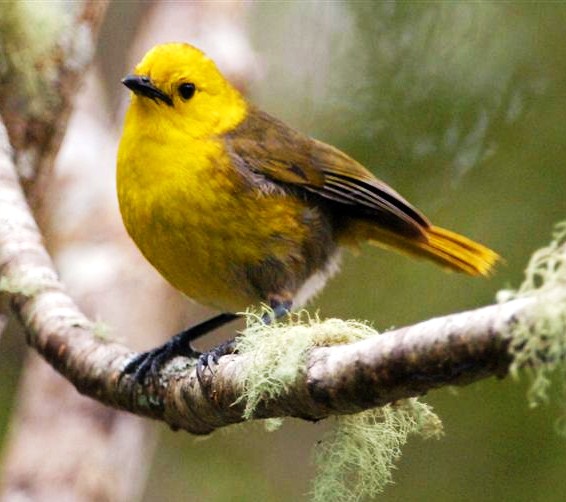Mohoua ochrocephala
 |
| Photo by Stephen Jaquiery (Otago Daily Times) |
Common name:
yellowhead (en); cabeça-amarela (pt); mohoua (fr); mohoua cabecigualda (es); gelbköpfchen (de)
Taxonomy:
Order Passeriformes
Family Pachycephalidae
Range:
This species is endemic to New Zealand where it was formerly widespread in the South and Stewart Islands. Currently it is rectricted to the southern parts of South Island, particularly in the Fiordland and Mt. Aspiring National Parks.
Size:
These birds are 15 cm long and weigh 25-30 g.
Habitat:
Yellowheads are mostly found in lowland red beech Nothofagus fusca forests on river terraces and, to a lesser extent, in podocarp/hardwood forests.
Diet:
These birds are primarily insectivorous, but occasionally feeds on fruits when in season.
Breeding:
Yellowheads breed in October-March. They nests in small cavities in large, old trees. There the female lays 1-5 eggs which she incubates alone for 20 days. The chicks are fed by both parents and fledge 23 days after hatching.
Conservation:
IUCN status – EN (Endangered)
This species has a very small and declining breeding range and the global population is currently estimated at just 1.000-2.500. The population is estimated to be experiencing a very rapid population decline, mostly due to the impact of introduced predators, namely stout Mustela erminea and black rat Rattus rattus. Conservation measures are underway, both in terms of intensive trapping of predators and through the translocated of yellowheads to three mammalian predator-free habitats, including Codfish island. A captive breeding programme is also under-way.







